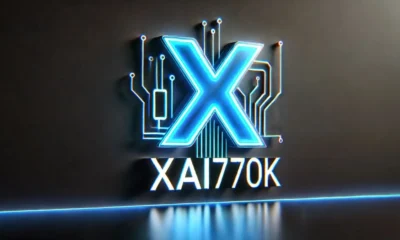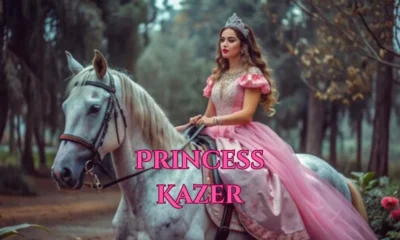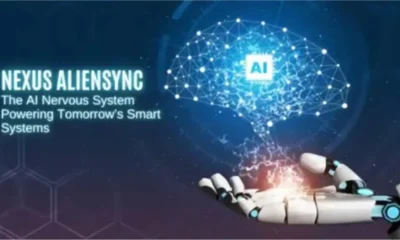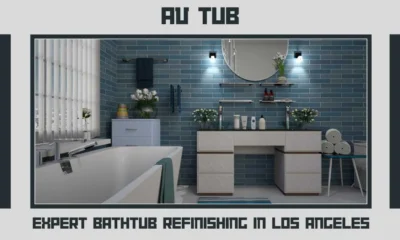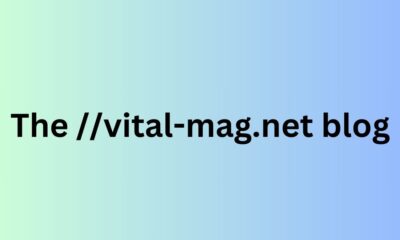GENERAL
Navigating the World of Real Estate Photography: Tips and Techniques

Introduction to Real Estate Photography
Real estate photography is an essential component of today’s property market. In an era where first impressions are often formed online, captivating images can significantly influence a buyer’s decision to engage with a listing. For companies like Georgetown Washington DC real estate experts Mike Aubrey Group, leveraging high-quality visuals is key to differentiating properties in a bustling market. As the real estate industry becomes more competitive, understanding the fundamental aspects of real estate photography not only helps create stunning visuals but also ensures that agents and sellers captivate and hold the attention of potential buyers.
Georgetown real estate experts in Washington, D.C., are known for their deep knowledge of the neighborhood’s rich history and unique property offerings. With a blend of luxury homes, historic townhouses, and modern condos, these professionals specialize in navigating Georgetown’s competitive market. They offer tailored advice to clients, helping them find the perfect property that aligns with their lifestyle and investment goals in this prestigious area.
Importance of Lighting in Real Estate Photography
Lighting stands as one of the most pivotal elements in the realm of real estate photography. It possesses the power to transform the perception of a room, adding depth, warmth, and authenticity to images. As a general rule, harnessing natural light is ideal, as it provides even illumination and enriches color fidelity. However, mastering the art of artificial lighting can greatly enhance property photographs, especially in dimly lit areas. Photography instructors often highlight the dichotomy between well-lit spaces that appear welcoming and poorly lit photos that turn potential buyers away due to unflattering shadows and resultant ambiguity. The influence of lighting cannot be overstated: proper lighting makes spaces appear larger, brighter, and more inviting, ensuring that the property’s first impression is a lasting one.
Best Angles and Composition Strategies
In the quest to deliver stunning real estate photographs, understanding the core principles of angles and composition is essential. Tackling composition opens a spectrum of strategies aimed at presenting a property’s most appealing aspects. A commonly embraced technique is photographing from a corner to enhance the perceived size of a room. This approach naturally includes elements from multiple walls, offering depth and scale. Complementing this is the use of leading lines, directing viewers’ attention toward key features such as a luxurious fireplace or a state-of-the-art kitchen. For those keen on refining their compositional prowess, exploring photography composition techniques provides a wealth of additional insights, underscoring the transformative impact that thoughtful photography can have within the real estate domain.
Using Technology to Enhance Photography
The digital age is revolutionizing real estate photography with its array of technological tools. Unmanned aerial drones offer breathtaking aerial views, providing prospective buyers with spatial context that ground-level photos cannot. Especially for larger estates, expansive landscapes, or unique architectural features, aerial shots add an awe-inspiring element to the visual narrative. In parallel, 3D virtual tours facilitate immersive explorations of space, conveying a sense of flow and fine details without an in-person visit. Such innovations not only enrich the buyer’s experience but also break geographical barriers, expanding the potential audience. For a comprehensive understanding of how these tools are making waves, delving into technological advances in photography equips professionals with the knowledge to stay at the forefront of industry trends.
Common Challenges and How to Overcome Them
Engaging on-site for photo shoots, photographers frequently encounter unpredictable challenges ranging from inclement weather to restricted accessibility. A successful real estate photographer must exhibit adaptability and proactive problem-solving. For instance, overcast skies or rainy conditions may necessitate the use of advanced camera settings to compensate for muted light conditions, ensuring the resulting images maintain clarity and vibrancy. Similarly, leveraging post-processing software can rectify color imbalances or exposure deficiencies. By scheduling shoots during optimal times, like the golden hour, outdoor photos can capitalize on soft, diffused sunlight, highlighting properties in their best light and ensuring that environmental hurdles do not impede the end goal.
The Role of Photography in Marketing Real Estate
Engagement in real estate transactions is heavily influenced by visual appeal, aligning quality photographs with successful property sales. Studies affirm that listings adorned with professional photography close more expediently and command premium prices. Factors such as clear images, attention to design details, and emotive ambiance work symbiotically to enchant potential buyers, making photography an indispensable tool in the marketing arsenal. Effective photos capture the essence of a home, crafting a life-like experience that inspires and persuades, thus elevating its market appeal.
Tips for Working with Real Estate Agents
A harmonious alliance between photographers and real estate agents fosters photographs that ampulate a property’s desirability. Essential to this synergy is transparent communication. Understanding an agent’s intentions, whether focusing on distinctive architectural designs or exuding spatial comfort, sets a unified vision for the session. Photographers should remain attuned to feedback, remaining flexible to adjustments that might necessitate emphasizing different elements. Through cooperatively preparing shot lists and consulting on desired features, this partnership ensures the delivered images resonate with target audiences.
Conclusion: Staying Ahead in Real Estate Photography
Real estate photography is a dynamic and evolving field where innovation and traditional expertise converge. Staying informed about industry trends, whether in technology or photographic techniques, is crucial for continued success. By prioritizing ongoing education and being adaptable to emerging tools and challenges, photographers enhance their craft and significantly contribute to the value proposition within the real estate market. As their work creates connections and emotional engagements, real estate photographers play an instrumental role in guiding buyers to find their dream homes.
-

 BIOGRAPHY7 months ago
BIOGRAPHY7 months agoBehind the Scenes with Sandra Orlow: An Exclusive Interview
-

 HOME1 year ago
HOME1 year agoDiscovering Insights: A Deep Dive into the //vital-mag.net blog
-

 HOME1 year ago
HOME1 year agoSifangds in Action: Real-Life Applications and Success Stories
-

 BIOGRAPHY1 year ago
BIOGRAPHY1 year agoThe Woman Behind the Comedian: Meet Andrew Santino Wife







